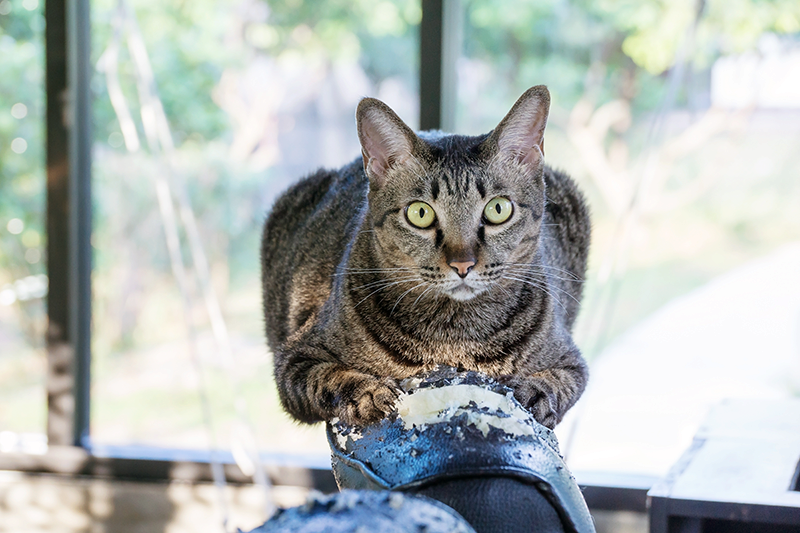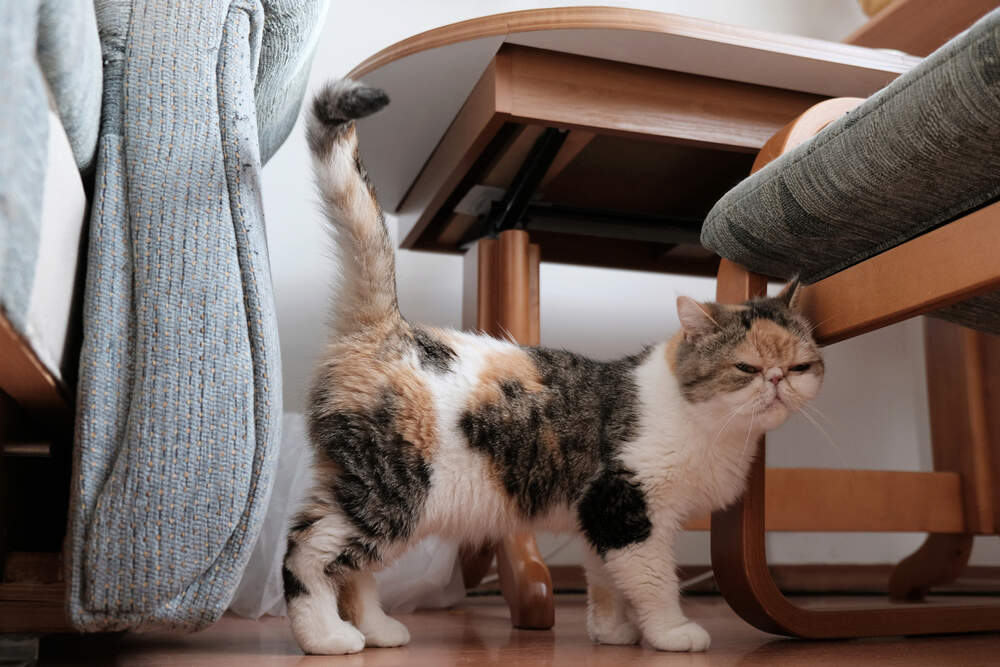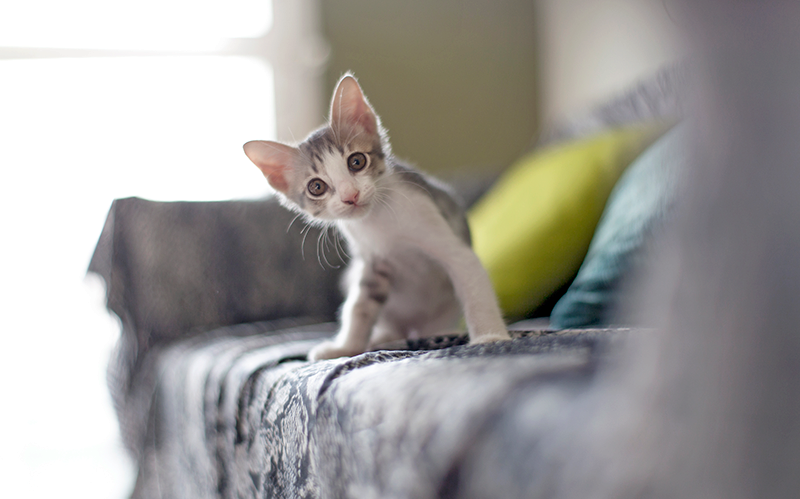Tips to Solve Cat Scratching on Furniture & Doors
The evidence is everywhere—the sofa, curtains, and even your walls—your favorite feline is a scratcher! For all the meows, purrs, and cuddles, a red flag is still raised when it comes to allowing your cat to cruise freely about the house. You may find yourself asking, "How do I keep my cat from scratching the furniture? Is it even possible?"
Why Do Cats Scratch?
What drives your soft and sweet friend to become scratch-happy? There are several reasons your cat might be scratching. The following behaviors are considered "normal" scratching.
1. Claw maintenance.
Cats scratch at objects to clean their claws and remove worn outer layers. If your cat is indoor-only and you regularly trim her nails, this can help cut down on unwanted scratching.1
2. Marking her turf.
Regular scratching at the same location is a way for a cat to mark and maintain her territory.
3. Entertainment.
She isn't intentionally targeting your sofa corner or hands, but scratching is an enjoyable way for her to burn off some energy. Have you ever noticed your cat scratching out of happiness when you come home or when you're about to play with a feather wand toy?
4. A defense mechanism.
Though it also occurs while playing, the swipe of a paw may be a show of body language by your cat that you're petting a little too strongly.
Cat Scratching Can be Caused by Stress
Cats tend to scratch more—and often vertically—when they're feeling threatened or stressed. You might see scratch marks up and down a door jamb, window frame, sofa, carpet, or chair. This means your cat is nervous or unhappy and is trying to increase her comfort level. This isn't good for your cat or your home.
How to Stop Cats from Scratching Furniture
While scratching is as natural as meowing, there are strategies to help reduce scratching that can keep your couch corners safe from harm.
1. Try Comfort Zone products.
Comfort Zone products help to reduce scratching and urine spraying by mimicking the soothing feline facial pheromone. This can give your cat a calm, relaxed feeling in any environment, even next to your living room sofa. Try the Comfort Zone Calming Diffuser to help create a calming environment, and use the Comfort Zone Spray & Scratch Control Spray directly on the object your cat is scratching.
2. Provide several cat scratching posts.
Want your cat and his claws away from the furniture? Entice him with a place where scratching is welcomed. Set up a scratching post in the area where he previously displayed unwanted scratching. Try several varieties, including vertical and horizontal scratchers, to determine what he likes best.2 Then put catnip on the scratchers to further entice him to try them out. You might want to try the Stretch n' Scratch Cardboard Toy or the Creative Kitty Scratch, Ramp and Groom. Or turn his bed into a scratching post with the Universal Mount Kitty Sill with Cardboard Track. Toys like the Kitty Tippy Triangle Cardboard Toy are great too.
3. Deter his desire to scratch.
Use deterrents, such as foil or double-sided tape, to cover up sought-after places for your kitty's claws. If your cat's scratching because of territorial issues, providing cat trees, condos, and other spaces he can "own" might also help deter his need to scratch your furniture.
4. Try water or a "hissing" noise.
Teach your cat while gradually reducing vertical scratching by standing guard with a squirt bottle filled with water and giving him a light spray each time the claws come out. Some cats don't learn well from water, so keep that in mind. You might also try making a "hissing" noise when your cat starts to scratch at something you wish he'd leave alone. Many felines respond intuitively to this sound.
5. Nail maintenance.
In addition to calming products, cat scratchers, and other deterrents, keeping your cat's nails maintained goes a long way to helping reduce the damage caused by cat scratching. Keep your cat's nails trimmed or use nail caps. If you've never used nail caps before, ask your vet about how to apply them properly and how often they should be replaced.
6. Game time.
Divert attention from fabrics by giving your cat a furry friend in the form of a toy. Cat behavior issues won't have time to occur if they are in hot pursuit of a fuzzy mouse.
Cat scratching is a natural occurence that can be destructive to your home (and your sanity). With a few simple techniques, you can help redirect your cat's instincts and save your furniture and doors.
1. American Humane. "Cats and Scratching." AmericanHumane.org, 25 August 2016, https://americanhumane.org/fact-sheet/scratching/?.
2. ASPCA. "Destructive Scratching." ASPCA.org, https://www.aspca.org/pet-care/cat-care/common-cat-behavior-issues/destructive-scratching.



